Abstract
A method using an ammonia electrode is being developed for investigating the deamination of amino acids and amides by bacteria. Application of this method to Campylobacter jejuni and C. coli has led to the demonstration of D-asparaginase activity in some strains. This has allowed the subdivision of both species into D-asparaginase-positive and -negative biotypes. Even though the method is in the developmental stage, it was found to be generally reproducible and easy to perform. Areas for further improving the procedure have been identified. The ammonia electrode offers the theoretical possibility of investigating the breakdown of any amino acid by bacteria. It thus opens up a new and practical approach for separating species and strains, particularly in those bacterial groups that are difficult to subdivide by conventional means.
Full text
PDF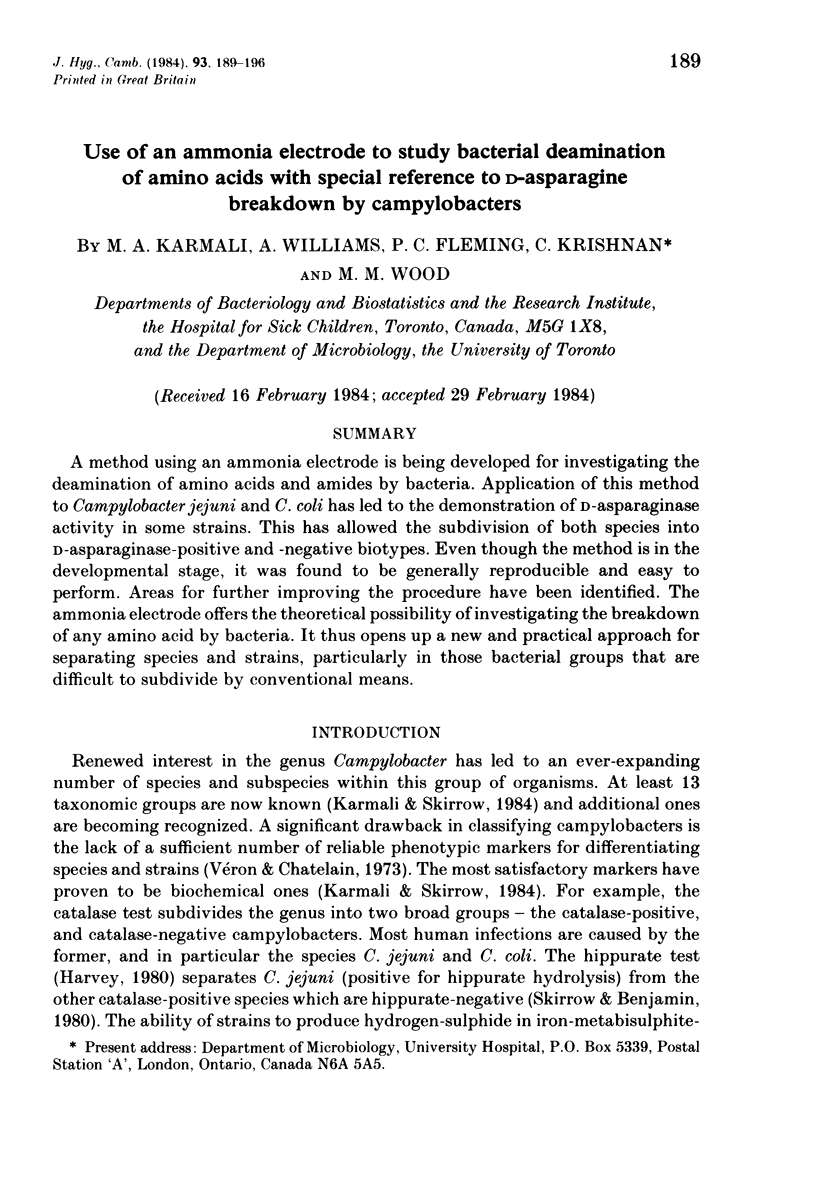
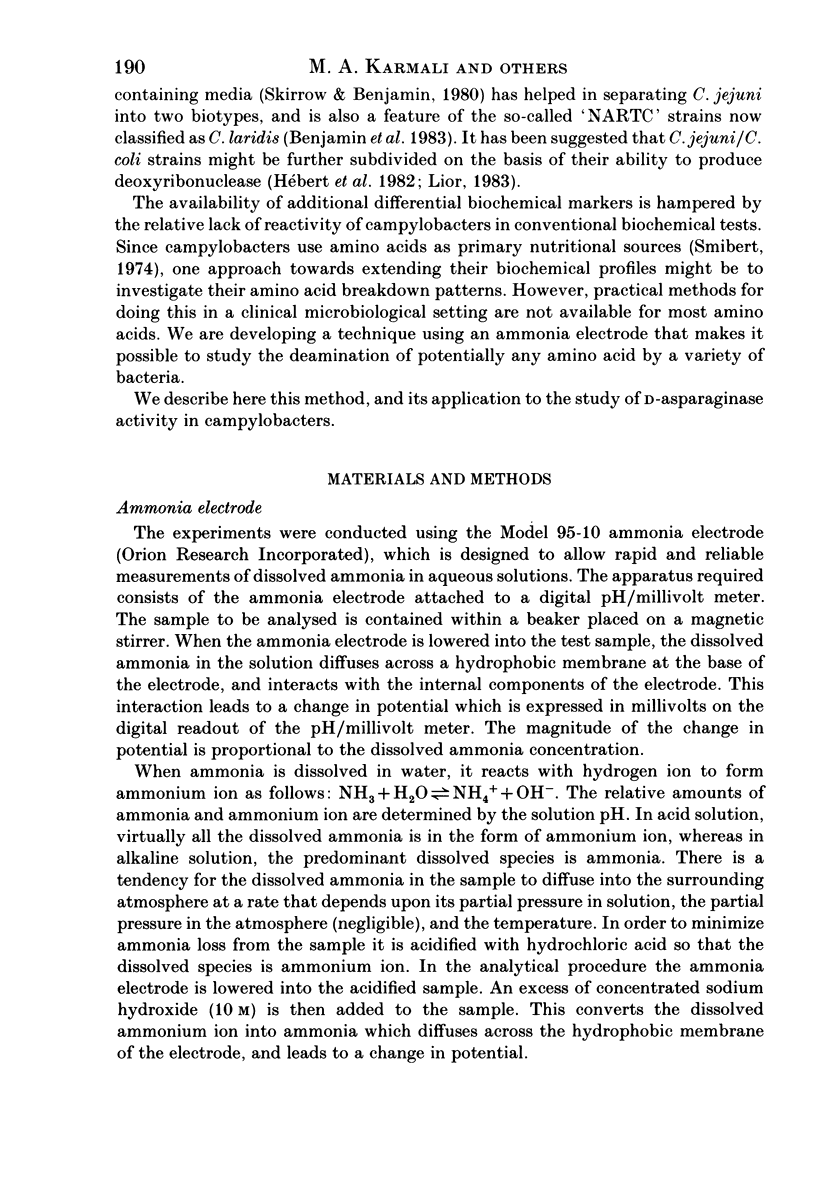
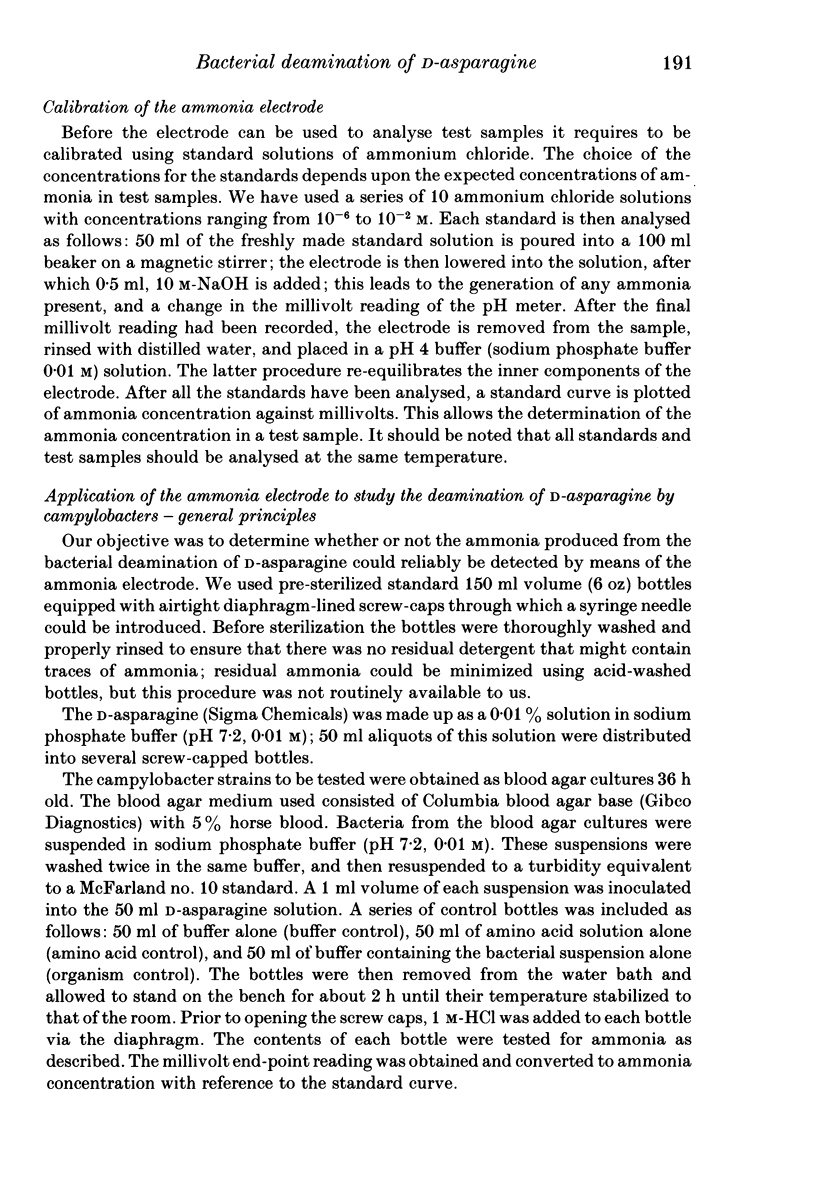
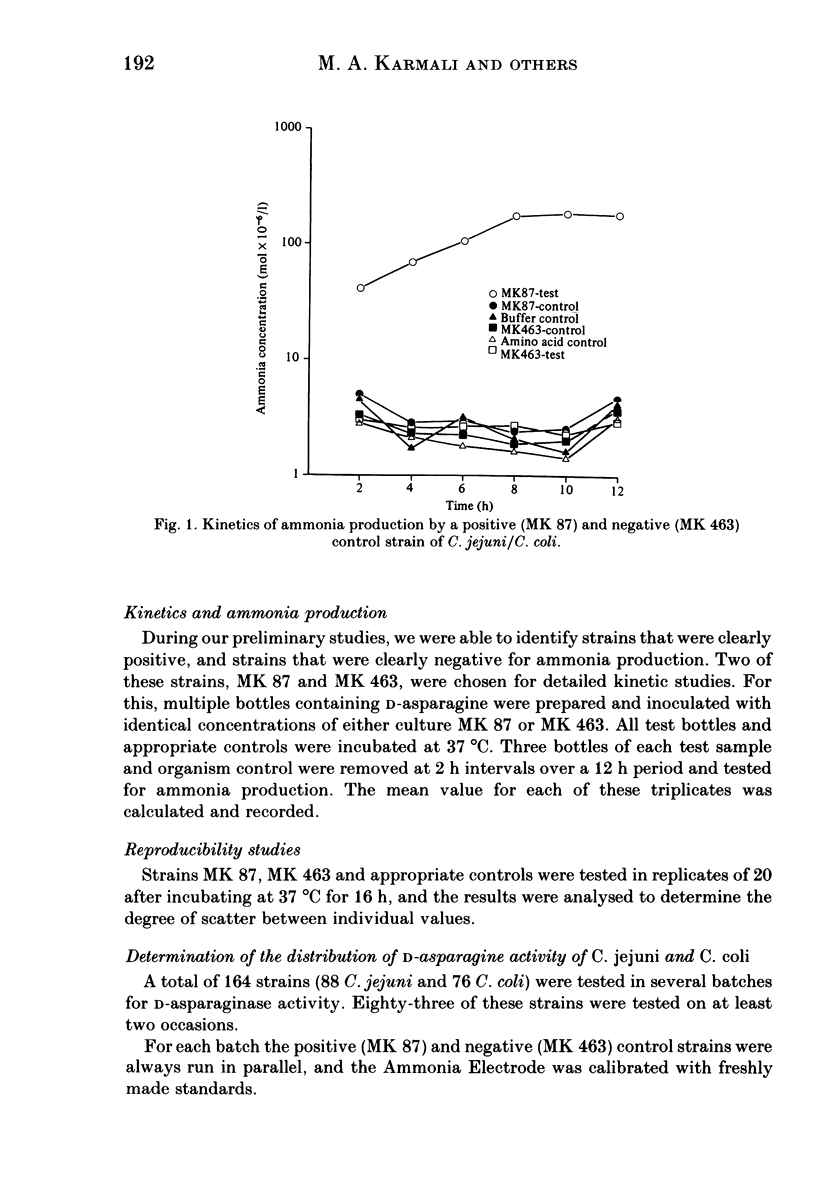
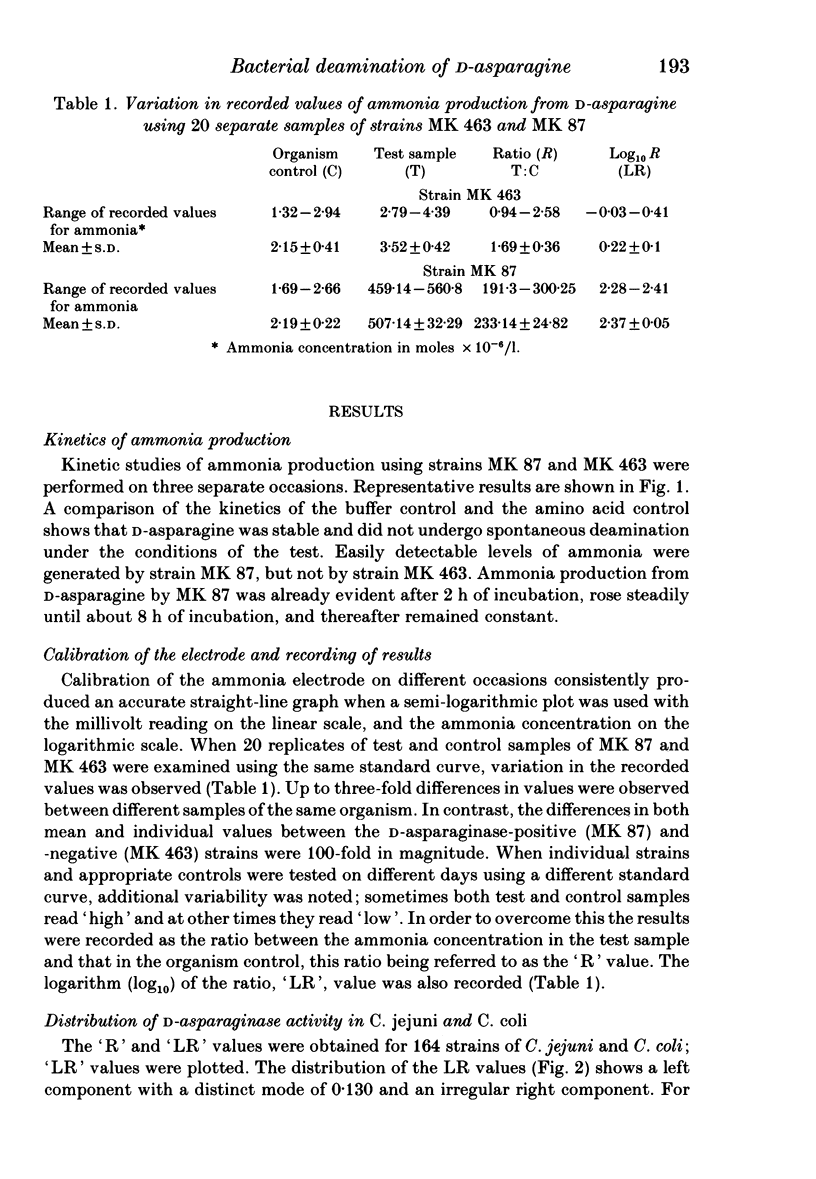
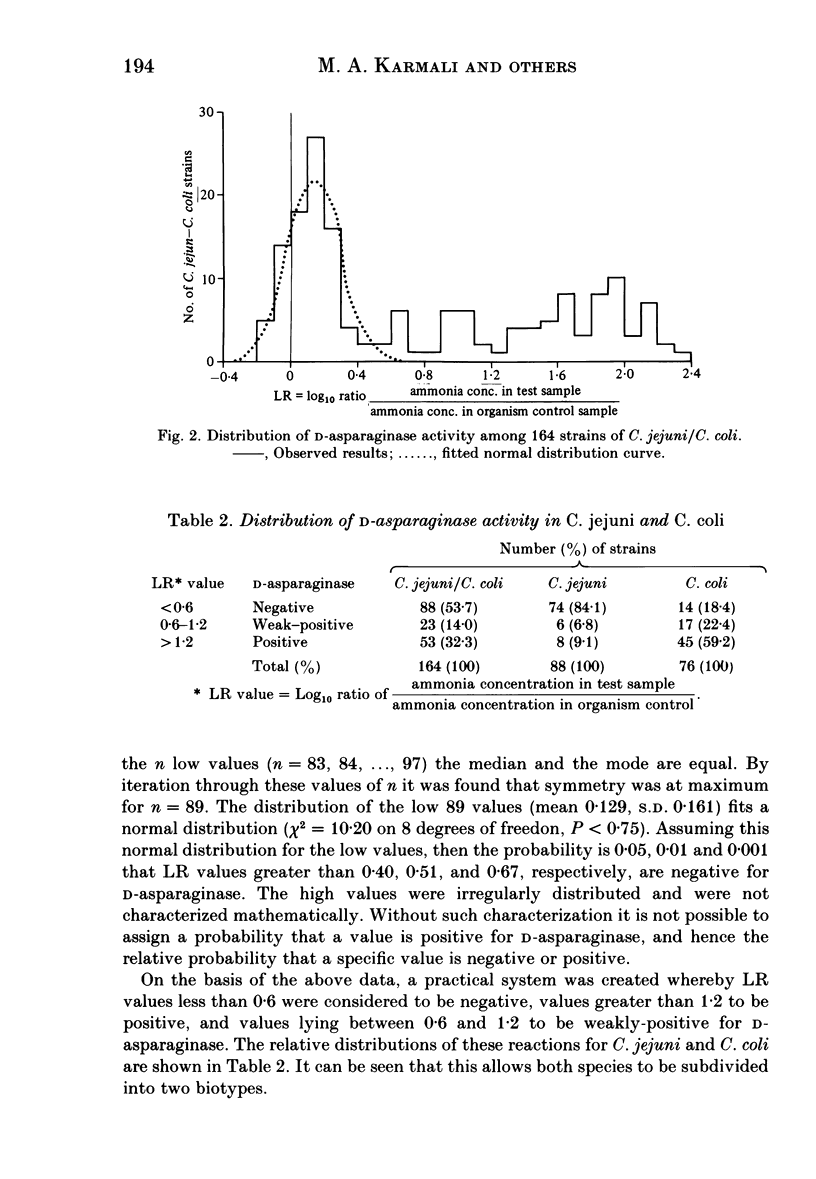
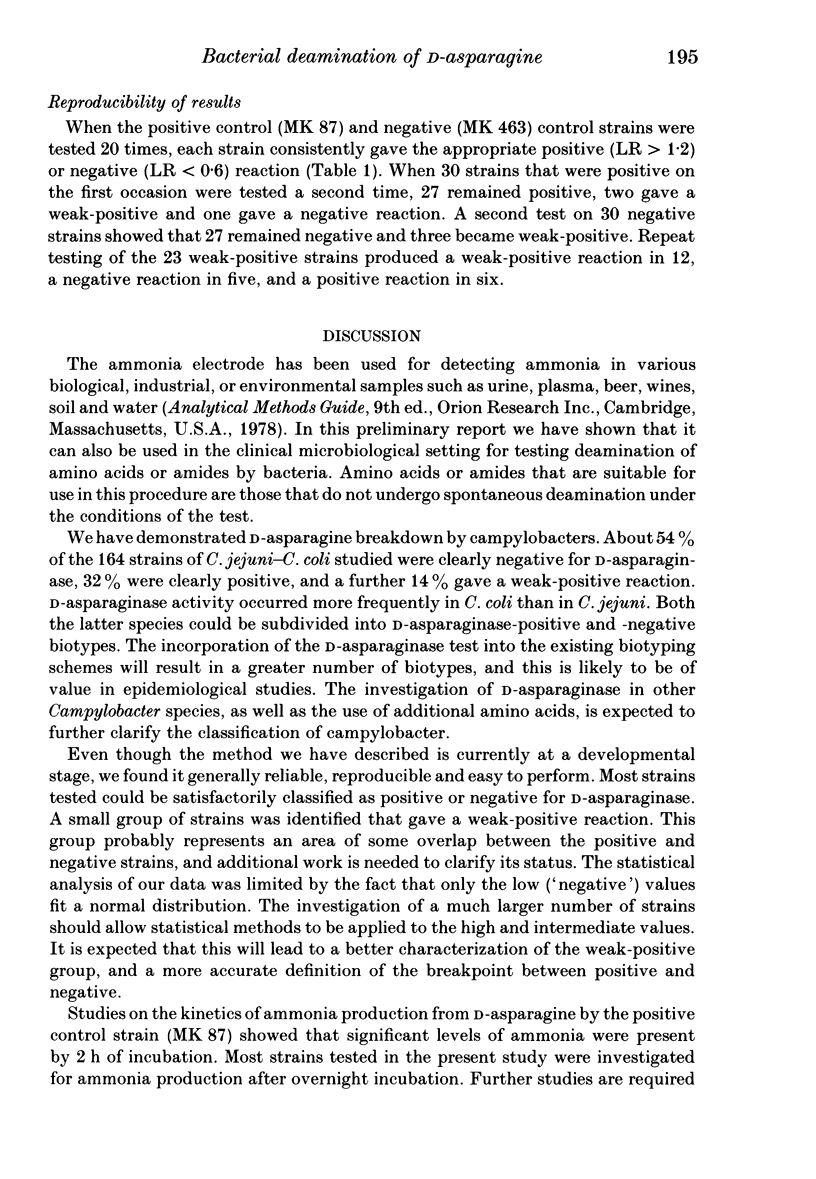
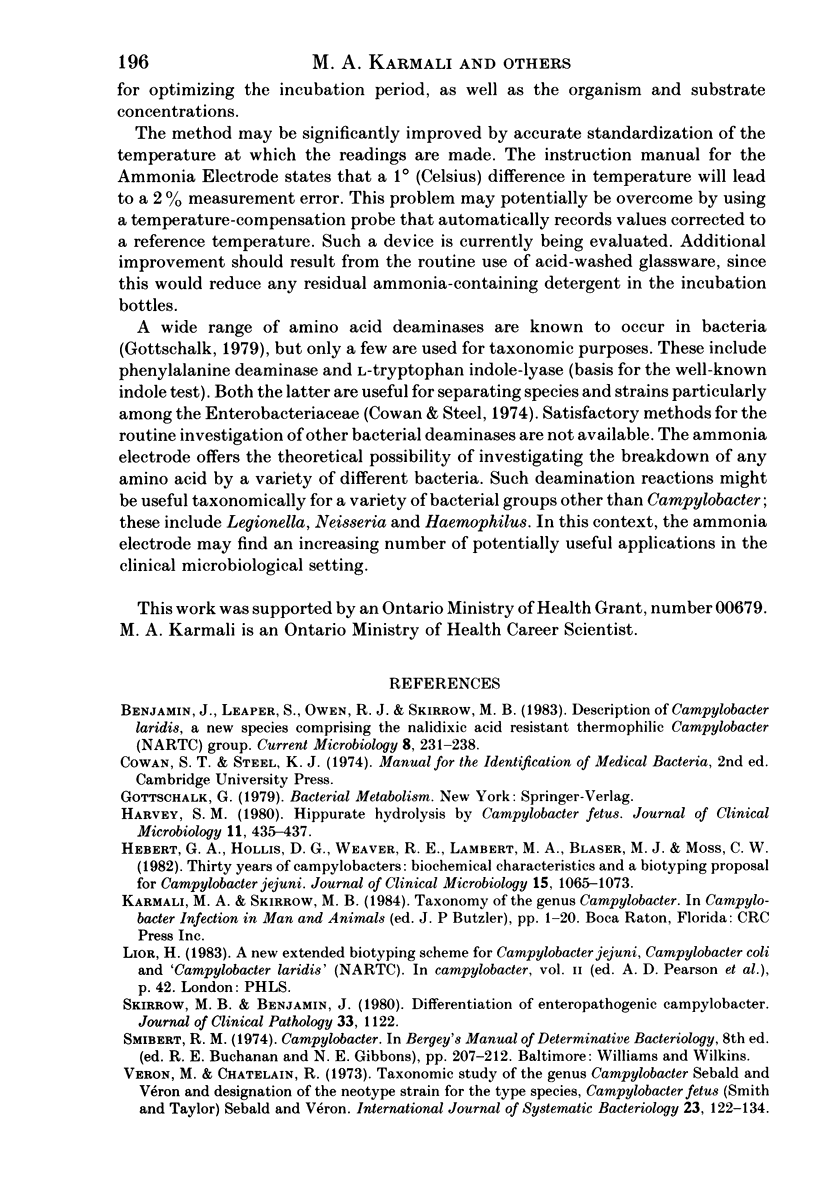
Selected References
These references are in PubMed. This may not be the complete list of references from this article.
- Harvey S. M. Hippurate hydrolysis by Campylobacter fetus. J Clin Microbiol. 1980 Apr;11(4):435–437. doi: 10.1128/jcm.11.4.435-437.1980. [DOI] [PMC free article] [PubMed] [Google Scholar]
- Hébert G. A., Hollis D. G., Weaver R. E., Lambert M. A., Blaser M. J., Moss C. W. 30 years of campylobacters: biochemical characteristics and a biotyping proposal for Campylobacter jejuni. J Clin Microbiol. 1982 Jun;15(6):1065–1073. doi: 10.1128/jcm.15.6.1065-1073.1982. [DOI] [PMC free article] [PubMed] [Google Scholar]
- Skirrow M. B., Benjamin J. Differentiation of enteropathogenic Campylobacter. J Clin Pathol. 1980 Nov;33(11):1122–1122. doi: 10.1136/jcp.33.11.1122. [DOI] [PMC free article] [PubMed] [Google Scholar]


